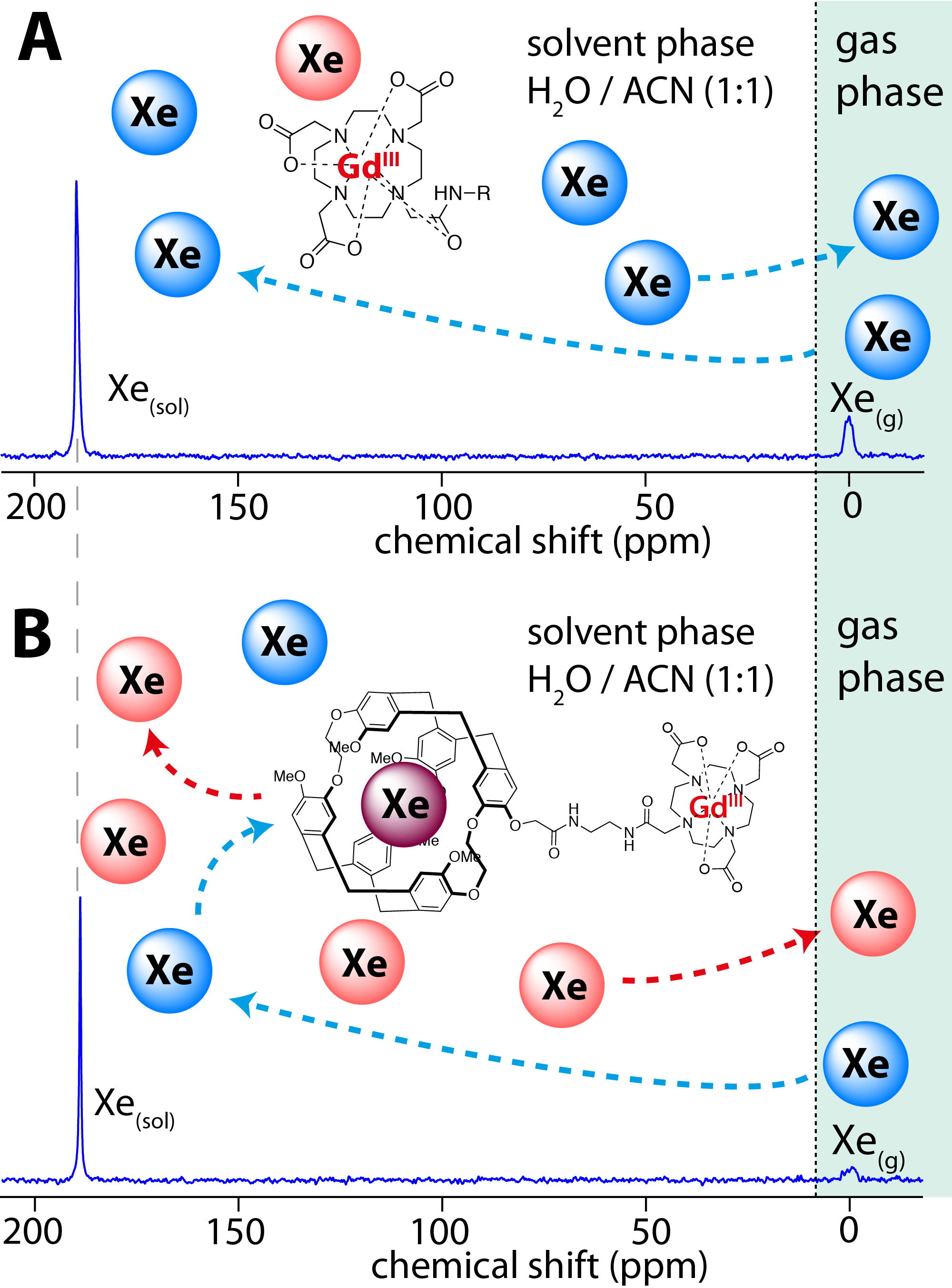Molecular Sensing with Hyperpolarized 129Xe using Switchable Chemical Exchange Relaxation Transfer.
- 1. University of Nottingham, Centre for Biomolecular Sciences, School of Chemistry, Nottingham, United Kingdom
- 2. University of Nottingham, Sir Peter Mansfield Imaging Centre, School of Medicine, Nottingham, United Kingdom
Aim: A new approach for hyperpolarized (hp) 129Xe molecular sensors is explored using paramagnetic relaxation agents that can be deactivated upon chemical or enzymatic reaction with an analyte. The goal is to generate molecular MRI contrast that does not rely on small chemical shift differences. Instead, the concept seeks a switchable depolarization agent for hp 129Xe.
Methods: Cryptophane encapsulated 129Xe within the vicinity of the paramagnetic center experiences fast relaxation that, through chemical exchange of xenon atoms between cage and solvent pool, causes accelerated hyperpolarized 129Xe signal decay in the dissolved phase.
Results: In this work, the relaxivity of GadoliniumIII-DOTA on 129Xe in the solvent was increased eightfold through tethering of the paramagnetic molecule to a cryptophane cage. This potent relaxation agent can be 'turned off' specifically for 129Xe through chemical reactions that spatially separate the GdIII centre from the attached cryptophane cage.
Conclusions: The proof of concept study demonstrated the viability of this novel approach. Unlike 129Xe chemical shift based sensors, the new concept does not require high spectral resolution and may lead to a new generation of responsive contrast agents for molecular MRI.

Lit.: F. Zamberlan, et al. ChemPhysChem in press.
